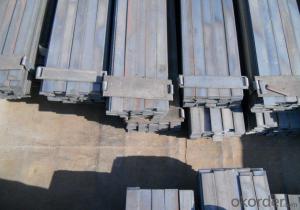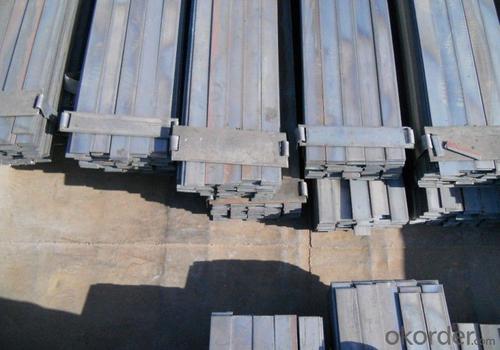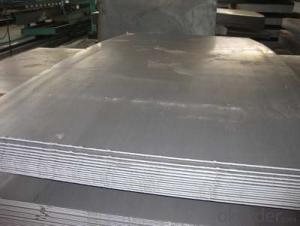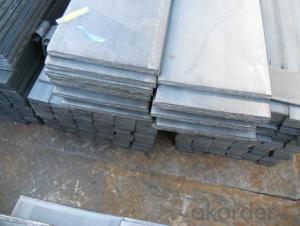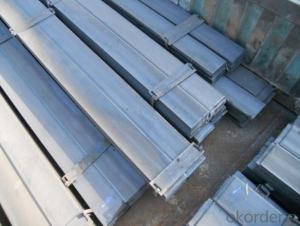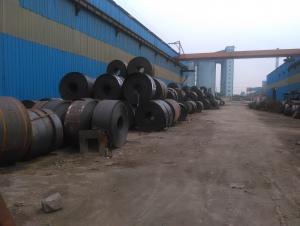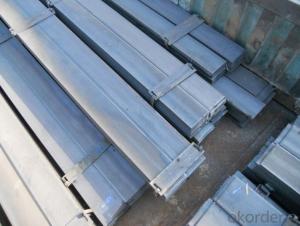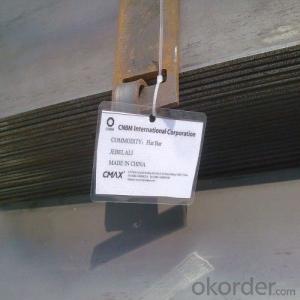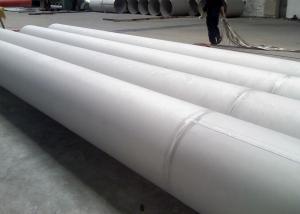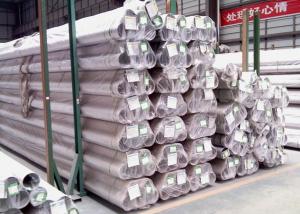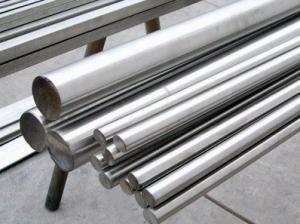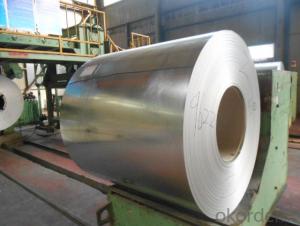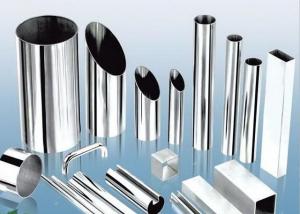Slit Cutting Flat Bar Material Grade Q235B Steel Flat Bars
- Loading Port:
- China main port
- Payment Terms:
- TT OR LC
- Min Order Qty:
- 50 m.t.
- Supply Capability:
- 10000 m.t./month
OKorder Service Pledge
OKorder Financial Service
You Might Also Like
Specification
Slit Cutting Flat Bar in Material Grade Q235B Steel Flat Bars
Description:
OKorder is offering high quality Slit Cutting Flat Bar at great prices with worldwide shipping. Our supplier is a world-class manufacturer of steel, with our products utilized the world over. OKorder annually supplies products to European, North American and Asian markets. We provide quotations within 24 hours of receiving an inquiry and guarantee competitive prices.
Applications:
Slit Cutting Flat Bars are ideal for structural applications and are widely used in the construction of buildings and bridges, and the manufacturing, petrochemical, and transportation industries.
Advantages:
OKorder's Slit Cutting Flats Barare durable, strong, and resist corrosion.
Main Product Features:
· Premium quality
· Prompt delivery & seaworthy packing (30 days after receiving deposit)
· Corrosion resistance
· Can be recycled and reused
· Mill test certification
· Professional Service
· Competitive pricing
Product Specifications:
Manufacture: Slit Cutting
Grade: Q195 – 235
Certificates: ISO, SGS, BV, CIQ
Length: 6m – 12m, as per customer request
Packaging: Export packing, nude packing, bundled
Chemical composition of Q235
Alloy No | Grade | Element(%) | ||||
C | Mn | S | P | Si | ||
Q235 | B | 0.12-0.20 | 0.3-0.7 | ≤0.045 | ≤0.045 | ≤0.3 |
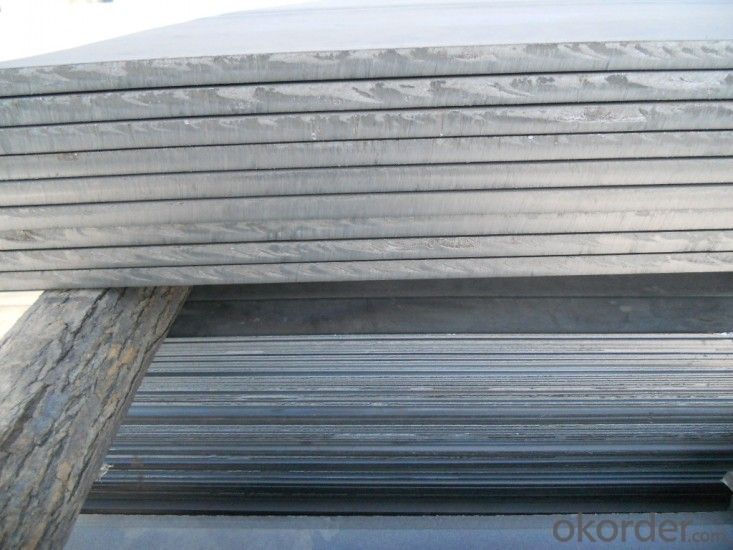
- Q: Can stainless steel sheets be used for power generation equipment?
- Yes, stainless steel sheets can be used for power generation equipment. Stainless steel is a highly durable and corrosion-resistant material, making it suitable for various applications in power generation, including turbine blades, heat exchangers, and electrical enclosures. Its high strength-to-weight ratio and resistance to extreme temperatures make it an ideal choice for reliable and long-lasting power generation equipment.
- Q: What are the different types of surface protection available for stainless steel sheets?
- There are several types of surface protection available for stainless steel sheets, each designed to provide varying levels of protection against corrosion, scratches, and other forms of damage. 1. Protective film: This is a commonly used surface protection method, where a thin, adhesive film is applied to the stainless steel sheet. The film acts as a barrier, protecting the surface from scratches, dirt, and other contaminants. It is typically removed after installation. 2. PVC coating: Polyvinyl chloride (PVC) coating is another popular option for surface protection. It is a thicker, more durable layer that provides excellent corrosion resistance. PVC coatings come in various colors and finishes, and can be applied to stainless steel sheets through a process called powder coating. 3. Paint coating: Similar to PVC coating, paint coating involves applying a layer of paint to the stainless steel surface. This can be done through spray painting or electrostatic coating methods. Paint coatings not only protect against corrosion but also offer aesthetic enhancements. 4. Passivation: Passivation is a chemical process that removes iron from the stainless steel surface, creating a protective oxide layer. This layer improves the corrosion resistance of the stainless steel sheet. Passivation is commonly used in industries where the stainless steel is exposed to aggressive environments. 5. Electropolishing: Electropolishing is a process that removes a thin layer of metal from the stainless steel surface, resulting in a smooth and clean finish. This process not only enhances the appearance of the stainless steel but also improves its resistance to corrosion. 6. Metal plating: Metal plating involves applying a thin layer of another metal, such as zinc or nickel, onto the stainless steel surface. This provides sacrificial protection, as the plated metal corrodes instead of the underlying stainless steel. Metal plating is commonly used in outdoor applications where the stainless steel is exposed to harsh environments. It is important to choose the appropriate type of surface protection based on the specific requirements of the stainless steel sheet. Factors such as the environment, intended use, and aesthetic preferences should be considered when selecting the most suitable surface protection method.
- Q: What is the thickness range of stainless steel sheets?
- The thickness of stainless steel sheets can differ based on the grade and purpose. Generally, they come in thicknesses ranging from 0.4mm to 6mm. Moreover, there are specific stainless steel sheets, like foil sheets, which are even thinner, measuring as fine as 0.02mm. Conversely, for robust applications, stainless steel sheets can be as thick as 50mm or beyond. Ultimately, the desired thickness of a stainless steel sheet hinges on the intended use, structural demands, and aesthetic preferences.
- Q: What are the different types of stainless steel sheet finishes available?
- Available are various types of finishes for stainless steel sheets, each possessing its own distinct characteristics and applications. Some of the most commonly used finishes include: 1. No. 1 Finish, also referred to as hot rolled or annealed and pickled finish, represents the most basic type of stainless steel sheet finish. It exhibits a rough and dull appearance with a non-reflective surface. This finish is typically employed in industrial applications where aesthetics are not of primary importance. 2. No. 2B Finish is a smooth and semi-reflective finish achieved through cold rolling, annealing, and pickling. It boasts a slightly glossy appearance and is commonly utilized in applications requiring a moderate level of corrosion resistance. 3. No. 4 Finish is accomplished through the polishing of the stainless steel sheet using a fine abrasive material. This finish presents a brushed appearance with a low gloss finish. It finds frequent use in architectural and decorative applications, such as kitchen appliances, countertops, and elevator panels. 4. No. 8 Finish, also known as a mirror finish, is the most reflective type of stainless steel sheet finish available. It is achieved by progressively polishing the surface with finer grits until a mirror-like finish is attained. This finish is frequently employed in decorative applications, including architectural accents, signage, and ornamental pieces. 5. Satin Finish exhibits a smooth, satin-like appearance with a low to medium gloss level. It is achieved through a combination of brushing and polishing techniques. This finish is often utilized in applications that require a balance between aesthetics and functionality, such as kitchen equipment, sanitary appliances, and automotive trim. 6. Bead Blasted Finish is accomplished by subjecting the surface of the stainless steel sheet to high-pressure blasting with glass beads. This creates a uniform and matte appearance with a subtle texture. It is commonly used in architectural and interior design applications, such as wall panels, elevator doors, and furniture. 7. Embossed Finish is achieved by mechanically imprinting a pattern onto the surface of the stainless steel sheet. This creates a textured appearance that can range from subtle to dramatic, depending on the chosen pattern. It is often employed in decorative applications, such as wall cladding, signage, and decorative panels. These examples merely scratch the surface of the numerous stainless steel sheet finishes available. The choice of finish depends on the specific requirements of the application, including considerations of aesthetics, corrosion resistance, and functionality.
- Q: Can stainless steel sheets be bent or formed without cracking?
- Yes, stainless steel sheets can be bent or formed without cracking. Stainless steel is known for its excellent formability and ductility, which allows it to be easily bent, shaped, or formed into various configurations. However, the extent to which stainless steel can be bent without cracking depends on several factors, including the grade and thickness of the stainless steel, the type of bending or forming process used, and the equipment and techniques employed. It is important to use proper bending techniques, such as using appropriate bending tools, applying gradual and consistent pressure, and avoiding excessive force or sharp bends, to prevent cracking. Additionally, preheating or annealing the stainless steel sheets can also improve their formability and reduce the risk of cracking during bending or forming operations.
- Q: Are stainless steel sheets resistant to pitting and crevice corrosion?
- Stainless steel sheets are resistant to pitting and crevice corrosion in general. The high corrosion resistance of stainless steel is attributed to its chromium content, which creates a protective oxide layer on the surface of the material. This oxide layer acts as a barrier against corrosive substances that could lead to pitting and crevice corrosion. However, it is important to note that the resistance to these types of corrosion can vary depending on the grade of stainless steel and the environmental conditions it is exposed to. Certain grades like 316 or 317 offer enhanced resistance. Moreover, aggressive environments with high chloride concentrations or acidic conditions can still pose a risk, requiring the use of more corrosion-resistant grades or additional protective measures. In conclusion, while stainless steel sheets are highly resistant to pitting and crevice corrosion, the specific grade and environmental factors should be taken into account for optimal performance.
- Q: What are the different types of edge finishes available for stainless steel sheets?
- There are several different types of edge finishes available for stainless steel sheets. These finishes are applied to the edges of the sheets to provide a clean and polished appearance, as well as to protect against sharp edges and potential corrosion. 1. Mill Finish: This is the standard edge finish for stainless steel sheets. It is the raw, untreated edge that is produced during the manufacturing process. While it may have a slightly rough or uneven appearance, it is still functional and commonly used for industrial applications. 2. Deburred Edges: In order to remove any sharp or jagged edges, the stainless steel sheet can be deburred. This is done by grinding or sanding down the edges to create a smoother and safer finish. Deburred edges are commonly used in applications where safety is a concern, such as in food processing or medical equipment. 3. Rounded Edges: Rounded edges are created by using a rounding tool to smooth out the sharp corners of the stainless steel sheet. This type of edge finish not only enhances the aesthetics of the sheet, but also reduces the risk of injury from sharp edges. Rounded edges are often preferred for architectural or decorative applications. 4. Beveled Edges: Beveled edges are achieved by cutting or grinding the edge of the stainless steel sheet at a specific angle, typically 45 degrees. This creates a chamfered edge that adds a sleek and modern look to the sheet. Beveled edges are commonly used in applications where aesthetics and design are important, such as in furniture or interior design. 5. Polished Edges: Polished edges involve buffing or polishing the edge of the stainless steel sheet to create a smooth and mirror-like finish. This type of edge finish adds a touch of elegance and sophistication to the sheet, making it suitable for high-end architectural or decorative applications. In summary, the different types of edge finishes available for stainless steel sheets include mill finish, deburred edges, rounded edges, beveled edges, and polished edges. Each finish offers its own unique benefits and is chosen based on the specific requirements of the application.
- Q: How do I prevent finger marks on stainless steel sheets?
- To prevent finger marks on stainless steel sheets, you can try a few simple steps. Firstly, make sure to clean the sheets regularly using a mild detergent or stainless steel cleaner to remove any existing fingerprints. Next, consider applying a protective coating or film specifically designed for stainless steel surfaces, which can provide a barrier against smudges and fingerprints. Additionally, try to handle the sheets with clean and dry hands to minimize the transfer of oils and dirt. Finally, consider using microfiber or lint-free cloths for cleaning instead of rough materials that can leave scratches or streaks.
- Q: Is there any magnetism in 304 stainless steel?
- This doesn't mean it is not qualified, because the most commonly used stainless steel decorative tube plate is Austenitic 304 material is generally non-magnetic or weakly magnetic, but fluctuations in chemical composition caused by smelting or processing of different magnetic properties may also appear, so it can not be considered to be counterfeit or substandard.
- Q: Can stainless steel sheets be used for soundproofing?
- Yes, stainless steel sheets can be used for soundproofing to a certain extent. While stainless steel itself is not a soundproofing material, it can be used as part of a soundproofing system. Stainless steel sheets can be installed as a barrier to block or reflect sound waves, reducing the amount of noise that passes through. However, for effective soundproofing, additional materials such as acoustic insulation and mass-loaded vinyl are typically used in conjunction with stainless steel sheets.
Send your message to us
Slit Cutting Flat Bar Material Grade Q235B Steel Flat Bars
- Loading Port:
- China main port
- Payment Terms:
- TT OR LC
- Min Order Qty:
- 50 m.t.
- Supply Capability:
- 10000 m.t./month
OKorder Service Pledge
OKorder Financial Service
Similar products
Hot products
Hot Searches
Related keywords
